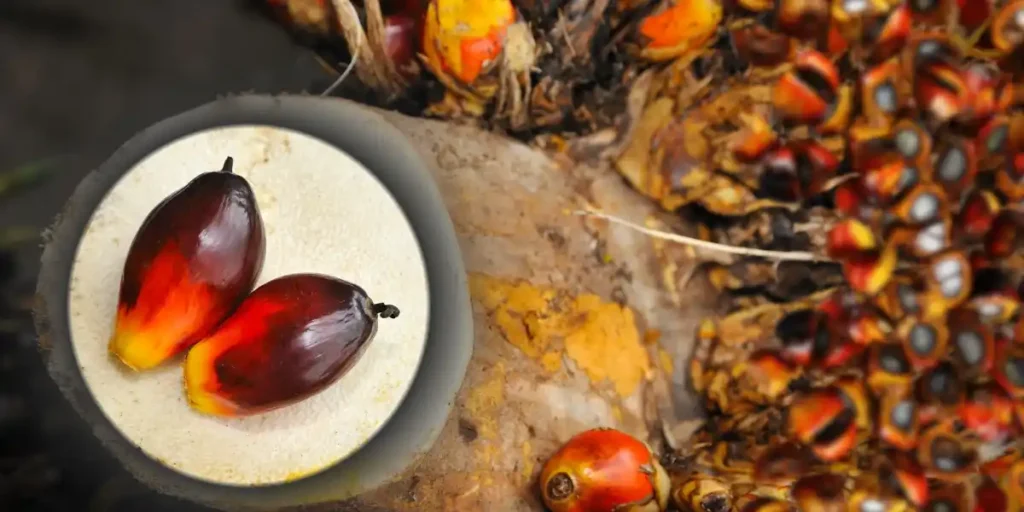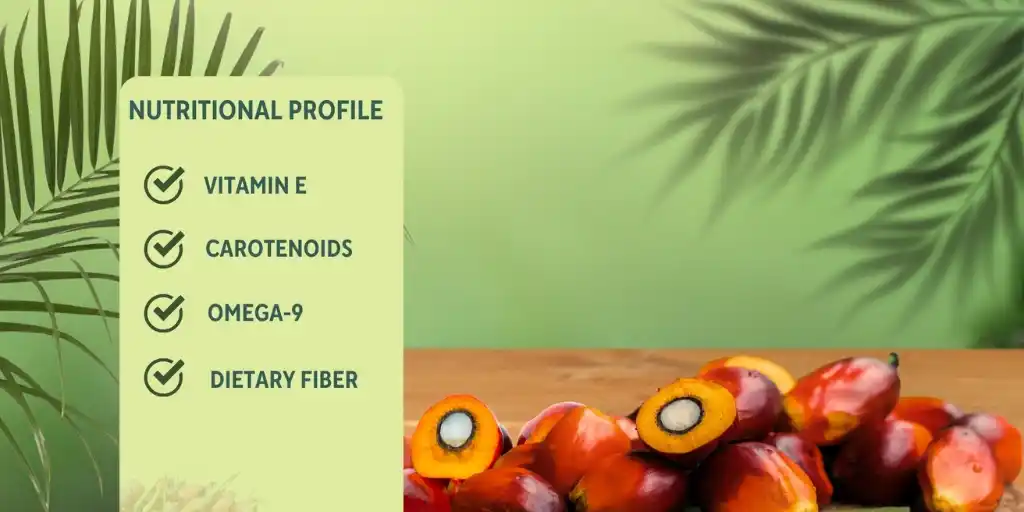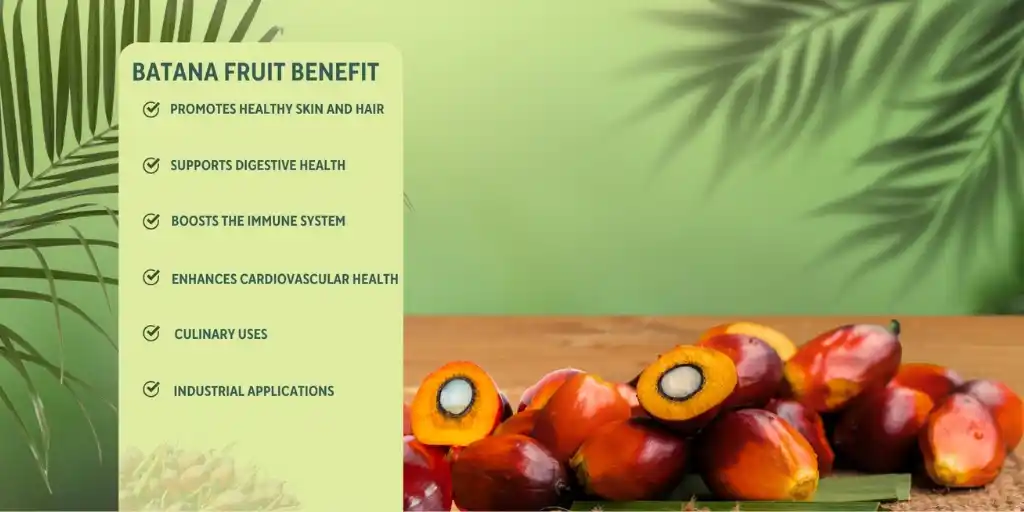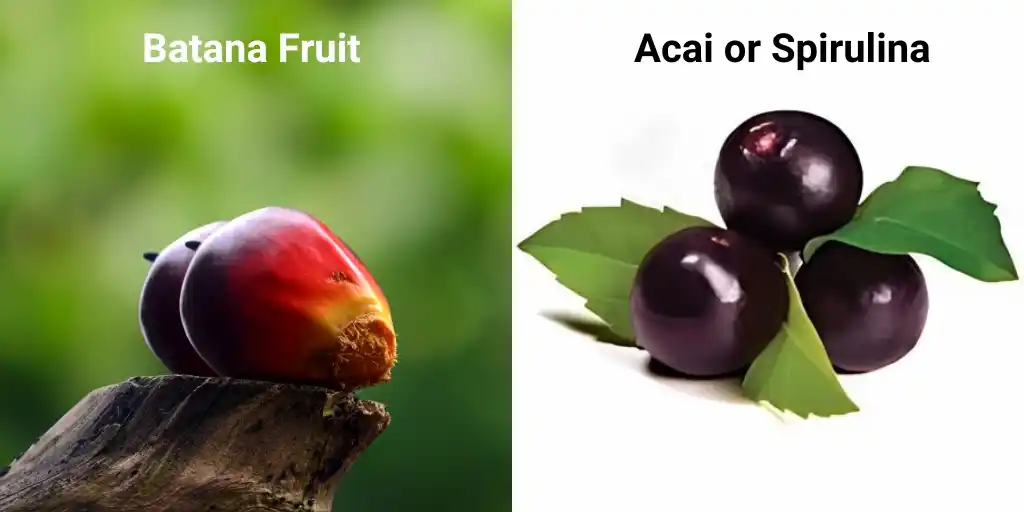Batana Fruit: Benefits, Uses, and Worldwide Availability

In the lush rainforests of Central and South America, hidden among the vibrant plants, grows a fascinating fruit called the Batana fruit. It may look simple, but it’s packed with amazing nutrients, making it a new favorite among health lovers and food experts. With its rich history, special qualities, and health benefits, this unique fruit is set to change how we think about and enjoy tropical fruits. With its unique properties and growing popularity, it’s time to explore what makes this fruit so special. It’s also time to explore why it captured the world’s attention.
What is the Batana Fruit?
It is the fruit of the American oil palm, scientifically named Elaeis oleifera. While its African cousin (Elaeis guineensis) is well-known for palm oil production, the Batana fruit is treasured for its own oil, rich in fatty acids, vitamins, and antioxidants. The fruit itself is small and oval-shaped, and turns a deep reddish-brown as it ripens. The pulp within the fruit is the source of Batana oil. This is a substance highly admired by indigenous communities and has been used for centuries as a natural remedy for skin and hair care. But its uses extend far beyond beauty—it’s a powerhouse of nutrition and an emerging superfood with a myriad of health benefits.
Botanical Description
The American oil palm, the source of Batana fruit, is a tall, perennial tree that can grow up to 20 meters tall. The tree’s fruit grows in large clusters, each cluster containing hundreds of fruits. The fruits themselves are small, typically 2-3 centimeters across. It is characterized by its vibrant orange-red hue and oval shape. A tough, fibrous outer layer protects the fresh, fleshy pulp within. Embedded in the pulp lies a hardened nut containing prized Batana oil, renowned for its cosmetic and culinary applications. This unique structure contributes to fruit resilience and adaptability to diverse tropical environments.

Why is it Gaining Popularity?
Batana fruit’s popularity can be attributed to several factors. First and foremost, there is a growing demand for natural, sustainable, and eco-friendly products, particularly in the beauty and wellness industries. Consumers are increasingly aware of the ingredients in their products, seeking alternatives that are effective and ethically sourced. Batana oil, extracted from the fruit, fits perfectly into this niche. It is known for its deep conditioning properties and ability to repair and rejuvenate hair and skin.
Another reason for its popularity is the ongoing trend of exploring indigenous knowledge and natural remedies. Fruit and oil have been passed down through generations of indigenous peoples, particularly the Miskito communities of Honduras. As modern consumers seek to reconnect with natural and traditional practices, traditional fruit has entered the spotlight.
Nutritional Profile
Batana fruit is a nutritional powerhouse, especially for the oil extracted from it. The oil is rich in oleic acid, a type of omega-9 fatty acid known for its heart-healthy properties. Oleic acid lowers oxidized cholesterol levels and reduces the risk of heart disease. In addition to oleic acid, Batana oil contains significant amounts of vitamin E, a potent antioxidant that protects the body’s cells from damage caused by free radicals. Vitamin E is also essential for maintaining healthy skin and eyes, and it has anti-inflammatory properties that can prevent chronic diseases.
Carotenoids are another key component of this nutrient-rich fruit. These are natural pigments that give the fruit its vibrant color and are also powerful antioxidants. Carotenoids are converted into vitamin A in the body, which is crucial for maintaining healthy vision, supporting the immune system, and promoting skin health.
Moreover, the fruit itself contains dietary fiber, which aids digestion and maintains a healthy gut. The combination of healthy fats, antioxidants, vitamins, and fiber makes this fruit a valuable addition to a balanced diet. This is particularly when used in the form of Batana oil.

Historical Background
The history of this historical fruit is deeply intertwined with Central America’s indigenous cultures, particularly the Miskito people of Honduras. For centuries, these communities have harvested this fruit and used its oil for various purposes, from cooking to medicine to cosmetic applications. Batana oil extraction and use knowledge has been passed down generations, often through oral traditions and hands-on learning.
Batana oil was used to restore damaged hair and promote growth. The Miskito people, sometimes referred to as “Tawira,” meaning “people of beautiful hair,” have long been known for their thick, lustrous hair, which they attribute to Batana oil. The oil was also used as a skin moisturizer and to treat minor wounds and burns, thanks to its healing and anti-inflammatory properties.
Over time, as globalization increased and the world became more connected, knowledge of the fruit and its oil spread beyond Central America. Today, Batana oil is recognized internationally for its benefits, though it remains closely associated with its traditions and cultures.
Climate Needs
Batana fruit thrives in tropical climates, where conditions are hot and humid year-round. The ideal temperature range for its growth is between 24°C and 30°C, with a preference for areas receiving consistent rainfall. The tree requires a minimum of 1,500 mm of rainfall per year, though it can tolerate higher amounts as well. In its natural habitat, the American oil palm grows in lowland rainforests, often near rivers or in swampy areas where the soil is rich in organic matter and well-drained.
Batana oil was used to restore damaged hair and promote growth. The In addition to temperature and rainfall, Batana trees require ample sunlight to grow and produce fruit. They are typically planted in areas with full sun exposure, though they can tolerate partial shade. The combination of warm temperatures, high humidity, and consistent moisture creates the ideal environment for fruit to flourish.
Cultivation
Cultivating Batana fruit demands careful consideration of several factors, including climate, soil conditions, and agricultural practices. It can be grown both in traditional plantations and as part of agroforestry systems, promoting biodiversity and ecological balance. Proper spacing, fertilization, and irrigation are essential for maximizing yield and fruit quality. Sustainable cultivation practices are increasingly emphasized to minimize environmental impact and ensure long-term productivity.
It takes about 3-4 years for a Batana tree to start producing fruit, with full productivity usually reached in the 7th year. Trees produce fruit for several decades, making them a long-term investment for farmers.
When to Harvest?
The timing of the harvest is crucial to ensuring the highest quality of Batana fruit and oil extraction. The fruit is typically ready for harvest when it reaches full maturity, which is indicated by a change in color from green to reddish-brown. At this stage, the fruit loosens from the clusters and may even fall naturally.
The harvest period varies depending on the region and local climate conditions. In general, the fruiting season occurs during the wet months, when trees receive ample rainfall. However, in areas with a consistent climate, it may be harvested throughout the year.

Harvesting Techniques
Harvesting this unusual fruit is a labor-intensive process that requires skill and precision. The traditional method involves using long poles fitted with sharp hooks to cut fruit clusters from trees. These poles allow workers to reach the high clusters without damaging the tree or the surrounding fronds. In some regions, particularly where the trees are not as tall, harvesting may be done by hand, with workers climbing the trees to collect the fruit.

Storage and Preservation
Proper storage is essential to preserve Batana fruit nutritional value and extend its shelf life. Different storage methods, including refrigeration, freezing, and drying, can be employed depending on the desired outcome. Refrigeration is generally recommended for short-term storage, while freezing or drying is suitable for long-term preservation. Optimal storage conditions maintain fruit flavor, texture, and nutrient content.
Batana Fruit Benefits and Diverse Uses in Different Fields
Batana fruit benefits are manifold, and its uses extend across various industries, from beauty and wellness to traditional medicine and beyond.

Promotes Healthy Skin and Hair
One of its most celebrated benefits is its ability to nourish and rejuvenate skin and hair. The fruit oil is rich in emollients, which lock in moisture, making it an excellent treatment for dry or damaged hair. Additionally, its high vitamin E content reduces scars, wrinkles, and other skin imperfections.
Supports Digestive Health
Incorporating this fruit into your diet can benefit your digestive system. Fruit high in fiber promotes healthy digestion and prevents constipation. Moreover, the natural oils in this fruit support gut health by maintaining the integrity of the intestinal lining. This is crucial for nutrient absorption.
Boosts the Immune System
The vitamins and antioxidants found in this remarkable fruit make it a powerful immune booster. Regular consumption can help your body fend off infections and illnesses by enhancing the production of white blood cells. These cells are essential for a robust immune response. Its anti-inflammatory properties also reduce the risk of chronic diseases.
Enhances Cardiovascular Health
Thanks to its high levels of omega-9 fatty acids, this fruit is great for heart health. These healthy fats lower bad cholesterol (LDL) levels while increasing good cholesterol (HDL), reducing heart disease risk. Additionally, the antioxidant power of this fruit help prevent oxidative stress, a major contributor to cardiovascular issues.
Culinary Uses
While Batana oil is primarily known for its cosmetic and medicinal uses, it can also be used in cooking, like other tropical oils. Its high oleic acid content makes it a healthy option for sautéing and frying. It can be used to flavor salads and marinades.
Industrial Applications
Beyond its use in beauty and wellness products, Batana oil is also being explored for its potential in industrial applications. Its high fatty acid content makes it a suitable candidate for biofuels and biodegradable lubricants, contributing to more sustainable practices in these industries.
How it Compares to Other Superfoods?
Compared to other superfoods like acai or spirulina, the Batana fruit stands out for its high healthy fats and skin-boosting nutrients. While acai is praised for its antioxidant levels, Batana offers a more balanced nutritional profile, making it an excellent addition to a well-rounded diet. Plus, its oil is a fantastic alternative to coconut oil for those looking for a more sustainable and ethical option.

Where to Find it?
While Batana fruit might not be readily available in your local grocery store, there are ways to get this exotic superfood.
How to get Batana Oil?
Online Retailers
Many online health food stores offer Batana oil and supplements.
Specialty Stores
Some health food stores and specialty markets may carry Batana products.
Farmers Markets
If you’re lucky, you might find fruit or products made from it at local farmers’ markets.
Environmental Impact
Fruit cultivation can have both positive and negative environmental impacts. Sustainable farming practices, such as agroforestry and organic methods, can minimize fruit ecological footprint. These approaches preserve biodiversity, protect soil health, and reduce harmful chemicals. However, large-scale monoculture cultivation can lead to deforestation, soil erosion, and water pollution. It is essential to promote responsible and sustainable fruit production to mitigate environmental risks.
Economic Importance
Batana fruit has significant economic importance, particularly for indigenous communities that traditionally harvest and use it. Batana oil production and sale provide a source of income for these communities, supporting their livelihoods and preserve their cultural heritage. As demand for Batana oil grows, it can create new economic opportunities in rural areas. This is especially true for regions where other forms of agriculture may not be viable.
On a broader scale, the commercialization of fruit and its oil could contribute to the economic development of the countries where it is grown. By investing in sustainable production practices and developing value-added products, these countries can tap into the growing global market for natural and organic products.
Global Availability
Batana fruit availability is expected to increase in the coming years as more consumers seek out natural and sustainable alternatives to conventional beauty and wellness products. This trend is likely to drive investment in the cultivation and processing of this globally arising fruit, potentially leading to more widespread availability and lower prices. However, challenges such as climate suitability, pest and disease management, and market development need to be addressed to ensure successful cultivation and distribution on a global scale.
Risks and Considerations
While Batana fruit and its oil offer numerous benefits, there are also some risks and considerations to remember. One of the main concerns is the potential for allergic reactions, particularly for individuals’ sensitive to palm-based products. As with any natural product, it is critical to perform a patch test before using Batana oil on the skin or hair. This is to ensure it does not cause irritation or allergies.
It is critical to note that while Batana oil has been used traditionally for various medicinal purposes, it should not be considered a substitute for professional medical advice or treatment. Individuals with serious health conditions should consult a healthcare provider before using Batana oil or any other natural remedy. Pregnant and breastfeeding women should also consult with healthcare professionals before consuming fruit or products derived from it.
Pests and Diseases Affecting the Batana Fruit
Like other crops, it is susceptible to pests and diseases that reduce yield and quality. Common pests include insect infestations, such as weevils and beetles, while diseases like fungal infections and viral diseases can also affect the fruit. Integrated pest management (IPM) strategies, including crop rotation, biological control agents, and resistant varieties, can help manage pests and diseases effectively. Early detection and prevention are crucial to minimizing crop losses.

Future Prospect
The future of this wonderful fruit appears promising. With increasing consumer awareness of fruit nutritional benefits and versatility, demand is expected to grow. Research and development efforts are focused on improving cultivation techniques, developing new products, and expanding market reach. As the global focus shifts towards sustainable and healthy food options, this special fruit has the potential to become a significant player in the global food market.

Conclusion
Batana fruit is a remarkable tropical superfood with a rich history, diverse applications, and significant economic potential. As global interest in natural and sustainable products grows, extraordinary fruit is poised to become a key player in the beauty and wellness industries. However, responsible cultivation and sustainable practices are essential to protect the environment and ensure the long-term viability of this valuable resource. Whether you’re interested in its health benefits, cultural significance, or economic impact, it offers a wealth of opportunities for exploration and innovation.
